About a year and a half ago, we renovated our staircase because it looked dated and it was high time for an upgrade. There was also a strange carpet-to-hardwood transition that tripped us up every time, so the staircase renovation was one of the first projects we tackled in this house. We replaced the stair treads, railings, newel posts, and balusters and while I love how it turned out, it was always my plan to install a stair runner to minimize the noise as well as the risk of slipping. You can see our staircase renovation on my Instagram stories “Stair Reno” highlight.

We also have an 11-year-old, 100-pound Rhodesian Ridgeback named Watson who, in his old age, is starting to lose some mobility in his back legs. Going up and down the hardwood stairs was getting pretty scary, for him and for me! We have another staircase that leads down to our basement home theater and Watson has no issues whatsoever with those stairs because they’re carpeted. On the hardwood staircase, however, he’s very trepidatious so it’s my hope that installing a stair runner will help him feel more confident by giving him more traction.
Watch the Video!
How To Install A DIY Stair Runner
I’m excited to be partnering with Arrow Fastener again this year. Check out our previous Arrow Fastener collaborations: DIY pinboard, raised planter boxes with trellis, picture frame molding, and batt insulation installation. Thank you for supporting the wonderful brands that support this site! This DIY Stair Runner project took a mere THREE DAYS to complete, so I’m really kicking myself for not doing it sooner. Read on to see how everything went down.
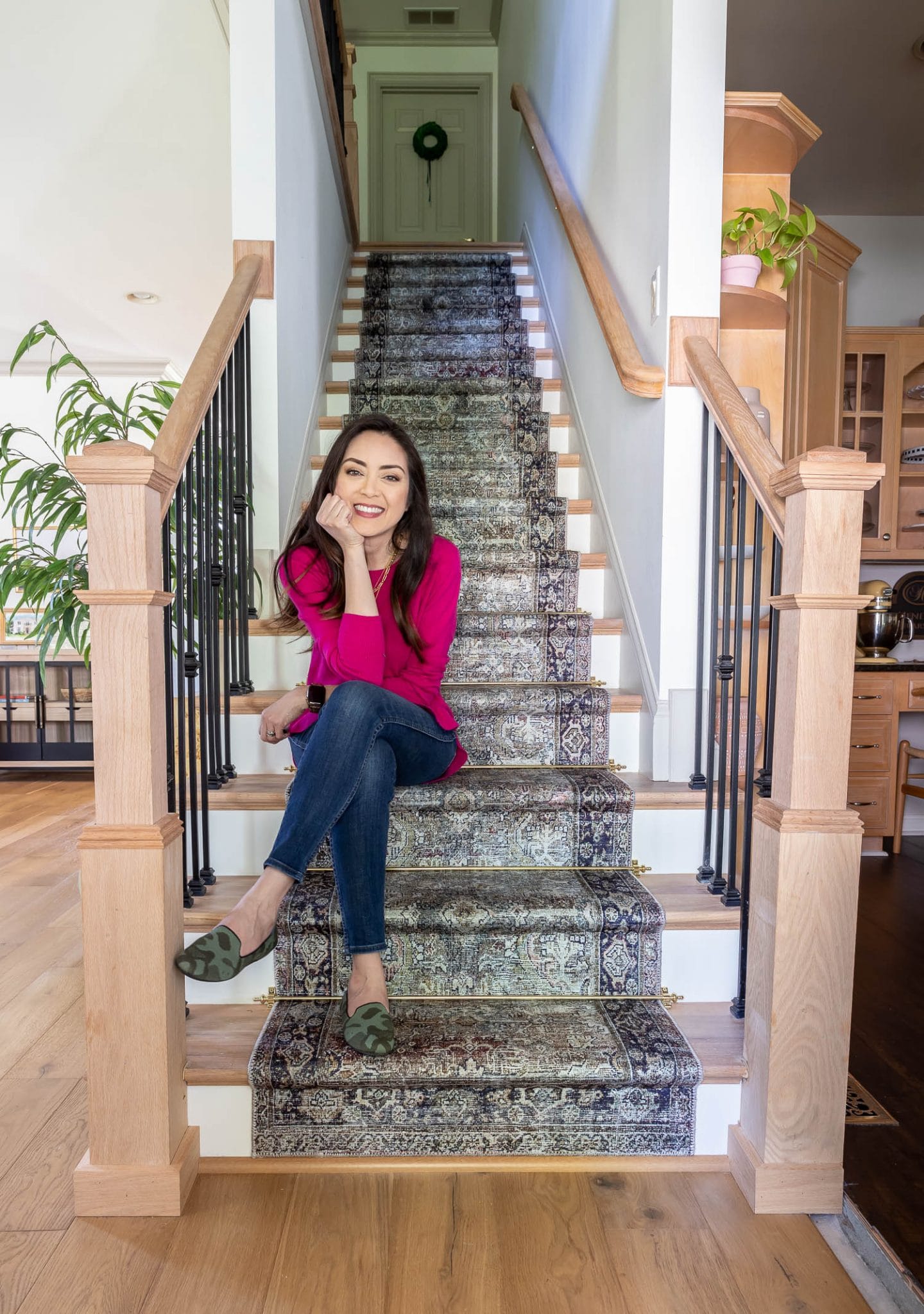
Tools and Materials:
- Arrow Fastener Pneumatic Staple Gun
- 1/2-inch staples
- Air compressor
- Painter’s 5-in-1 tool
- Scissors
- Pipe cutter
- Cordless drill/driver
- Rug pad
- Rug runner
- Brass stair rods and finials
Step 1: Preparation
Since the wood has been unfinished for over a year, the stairs were looking pretty grimy from the daily foot traffic. There were scuffs, spots, and drips, so I sanded each stair tread with 120-grit sandpaper to get back down to raw wood. This also opens up the wood fibers so that the oil finish can easily penetrate the surface. After about 30 minutes of sanding, the wood looks clean and brand new again!
The nail holes will need to be filled, but wood filler doesn’t usually take stain or finish very well and you end up with ugly splotches of wood filler that doesn’t match the rest of the wood tones. Here’s a little trick I learned from my contractor friend, Josh that minimizes the discrepancy between the wood filler and the natural wood tones. Apply a base layer of stain, finish, or whatever you’re working with first, let it dry, and then apply the wood filler after. I also try to wipe away any excess and surrounding wood filler with a damp rag to get as much of the wood filler off of the wood as possible. This way, I’m decreasing the area that the wood filler is in contact with the wood so the difference between the filler and wood tones is a lot less noticeable. See how those nail holes are now filled but virtually invisible?
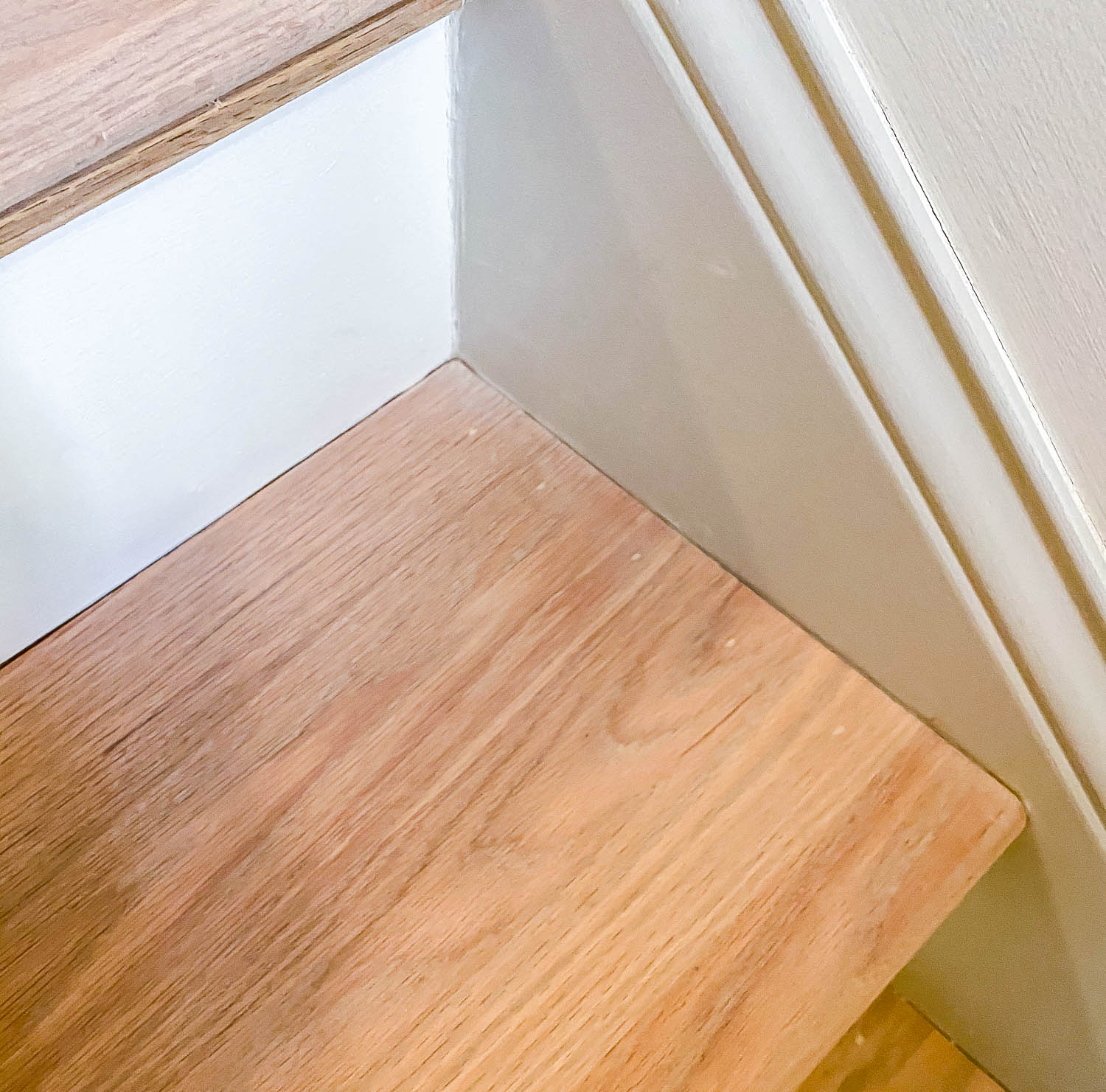
Step 2: Finish Hardwoods
I used Rubio Monocoat to finish the stairs – it’s a two-part oil finish that was originally created for hardwood flooring, so it’s super durable and the application couldn’t be easier. Simply mix the two parts (oil and accelerator) at a 3:1 ratio, spread it on, allow it to penetrate and bond to the wood fibers for a few minutes, then wipe off the excess with a soft cloth. Super easy and it smells good too! I allowed the finish to dry overnight, then I went back and touched up the risers with white paint, paying more attention to the outer edges since the majority of the stairs would be covered by the rug.
Step 3: Cut and Install Rug Pad
Now that the necessary prep work is done, it’s time to move onto the fun part – installing the rug! First, I had to figure out where to position the runner so that it’s centered on the stairs. One way to do this is to measure the width of the stair tread, measure the runner, and then do all the necessary math. Because I try to do as little math as possible, I found an easier way. I scooted the runner all the way up to one side of the stair tread, then measured the other side, where the tread wasn’t covered by the rug. Then I took this measurement and split the difference. I used painter’s tape to mark those measurements so my runner will stay straight and centered on the stairs.

Next, we used scissors to cut the rug pad down to size and stapled one to each tread. I’m using this Arrow Fastener pneumatic staple gun with 1/2-inch staples. I love how small and lightweight this tool is, yet it doesn’t skimp on power and reliability. Depending on the rug you choose, you may not need a rug pad, but I’m glad we added it because the stairs will feel extra cushy on our feet. Also, rug pads aren’t typically expensive and it takes minimal effort to install, so I’d recommend not skipping this step.
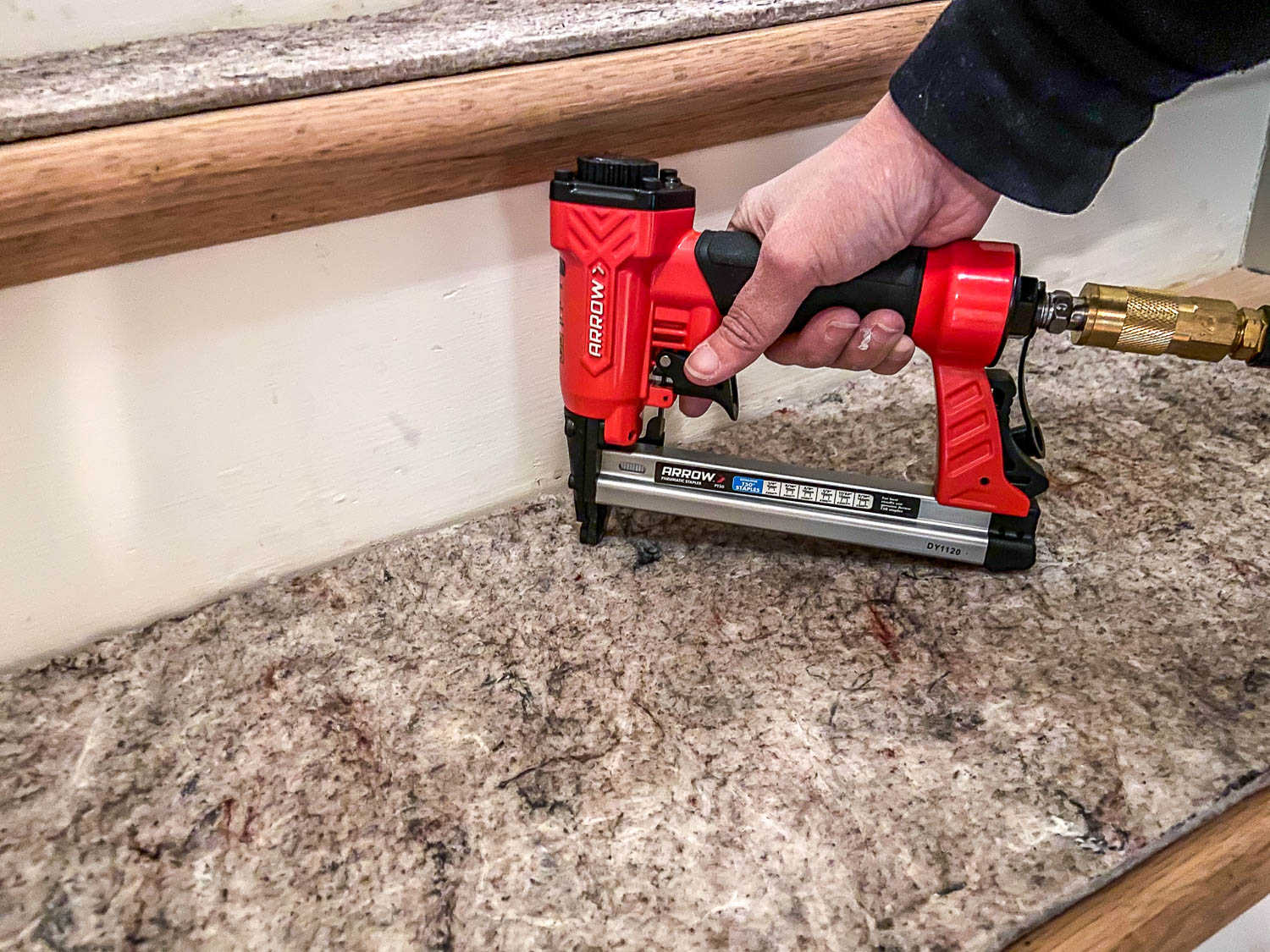
Step 4: Install Rug Runner
Now it’s time to install the runner! I started from the top of the stairs and worked my way down, stapling the runner just under each stair nose and at the joint where the riser meets the tread. I spaced the staples about 2-3 inches apart. You can also do a waterfall edge like my friend Ashley did, where you don’t wrap the rug under the stair nose, but I prefer a more tailored, tucked-in look. I used a painter’s 5-in-1 tool to tuck the rug into the crease for the tightest fit. I also colored the staples with a black Sharpie so that they’re less noticeable on the rug. My friend Sherry from Young House Love showed me this trick. Then I just continued down the stairs until the rug ended.
How To Join Separate Runners
I used a total of 3 runners on the entire staircase and because the rug pattern has a border, I had to cut it in certain places so that the pattern was continuous. I used scissors to cut the rug just under the stair nose and then cut off the top of the border of the second rug and stapled it right where the first rug ended. I would have preferred to cut the rug at the bottom of the riser, since the stair rods would cover the seam, but I wouldn’t have had enough rug had I done it that way. The seam where the rugs meet is barely noticeable – you have to really be searching for it to see it. I continued stapling the runner to the stairs until the second rug ended.
Step 5: Install the Last Runner
For the third runner, I started from the bottom and worked my way up to the second rug. The reason I did this was because I wanted the border to end at the bottom of the staircase. This way, the rug looks like one long, continuous rug and the border pattern is complete and intentional. There’s also a professionally finished seam which will be great to end on. Just be sure to double- and triple-check your measurements because you want the rugs to line up exactly with the previous one. For this reason, I only put in 3 staples at first just in case I had to pull the rug back up because I somehow veered off-course. Fortunately, everything lined up according to plan and so I went back and added the rest of the staples.
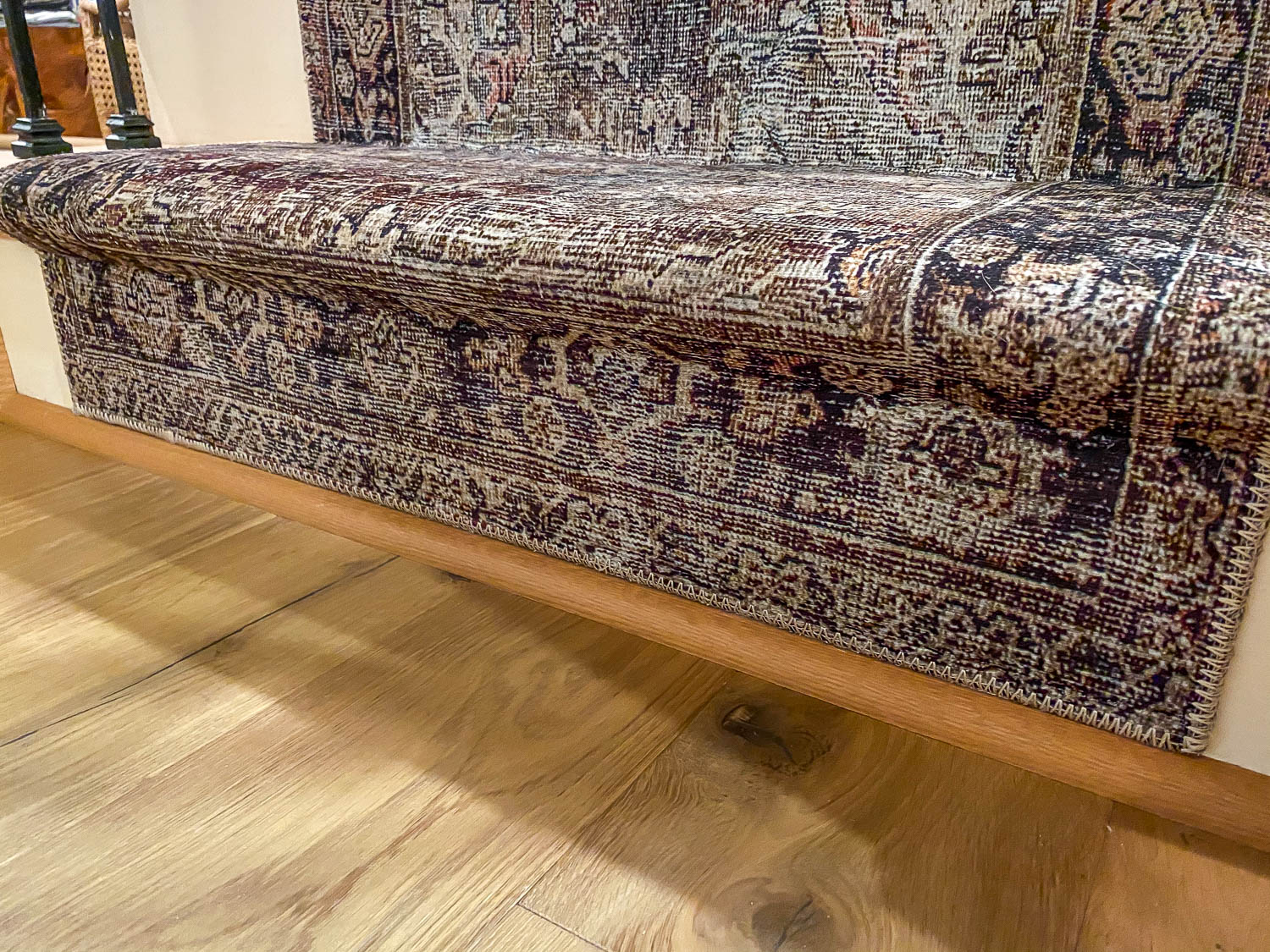
Step 6: Install the Stair Rods and Finials
As a finishing touch, I added brass stair rods. They’re purely decorative and a bit pricey I admit, but I think they add an extra level of elegance to the staircase. I used a pipe cutter to cut the brass tubing to length and screwed the hardware to the stairs.
And just like that, this staircase renovation is finally done! I’m so happy to have crossed this project off our list – I’m sure Watson appreciates it too. I hope you found this DIY Stair Runner tutorial helpful. If you tackle this project, be sure to tag me on social media so I can see!
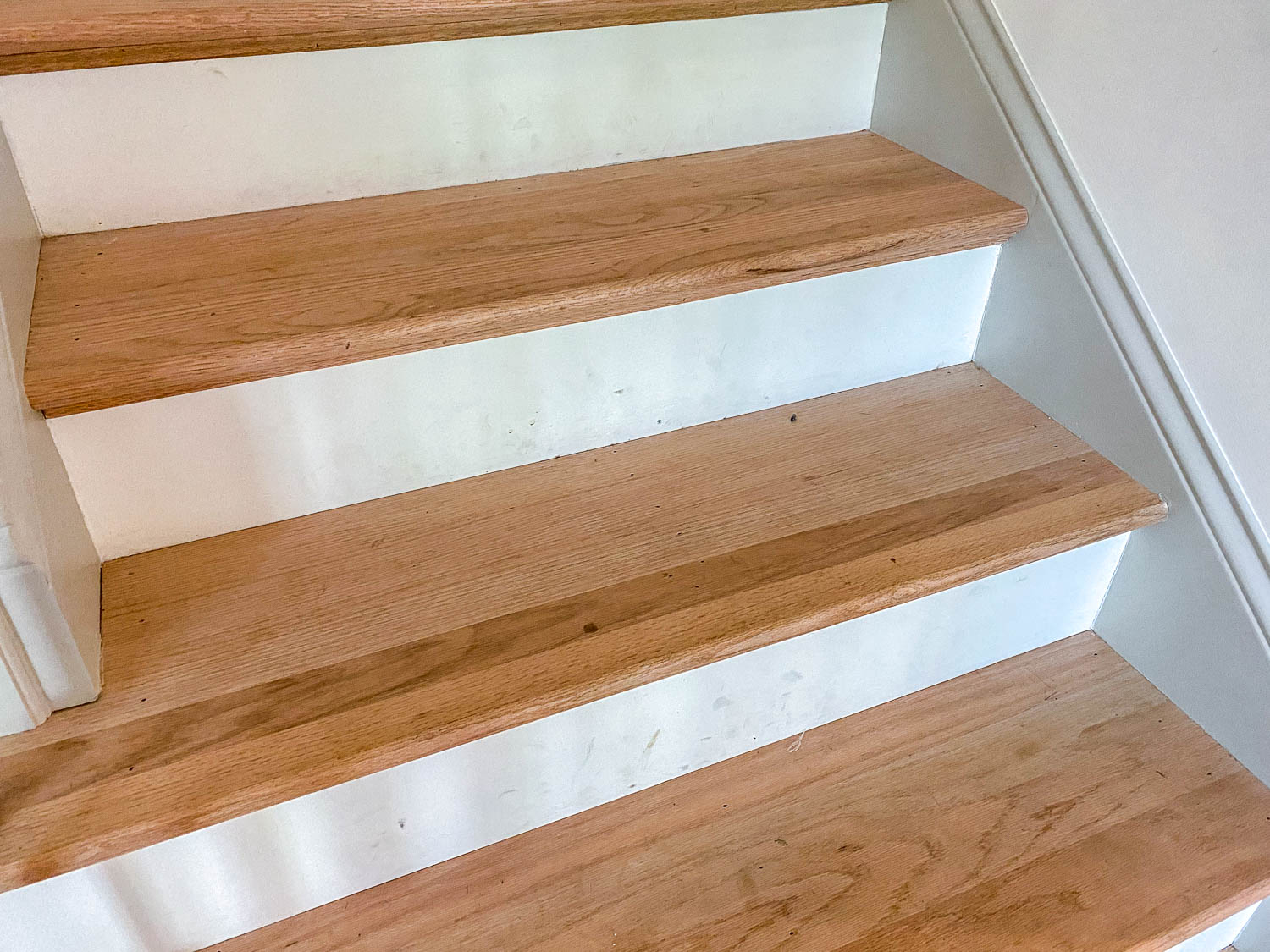
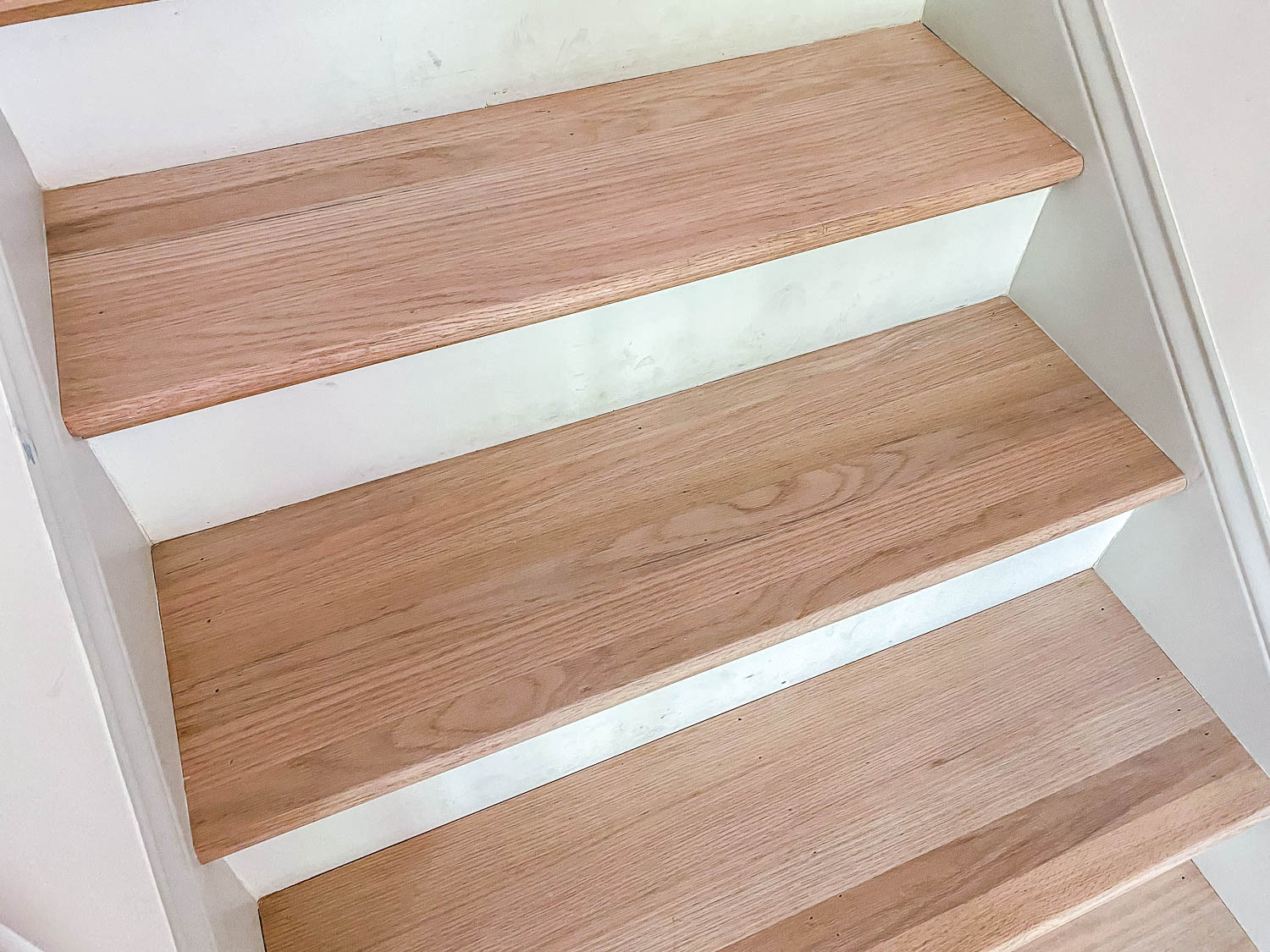
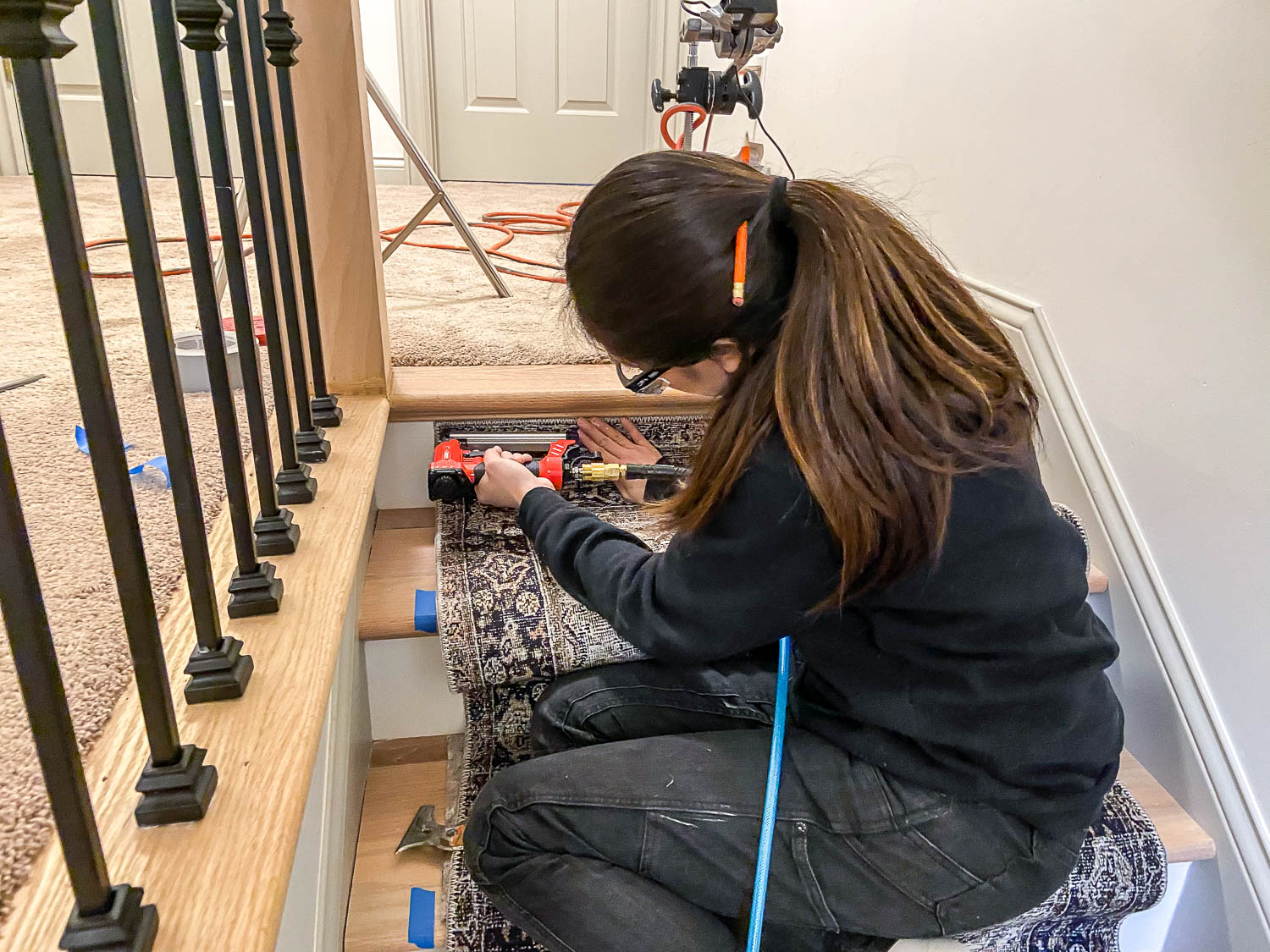
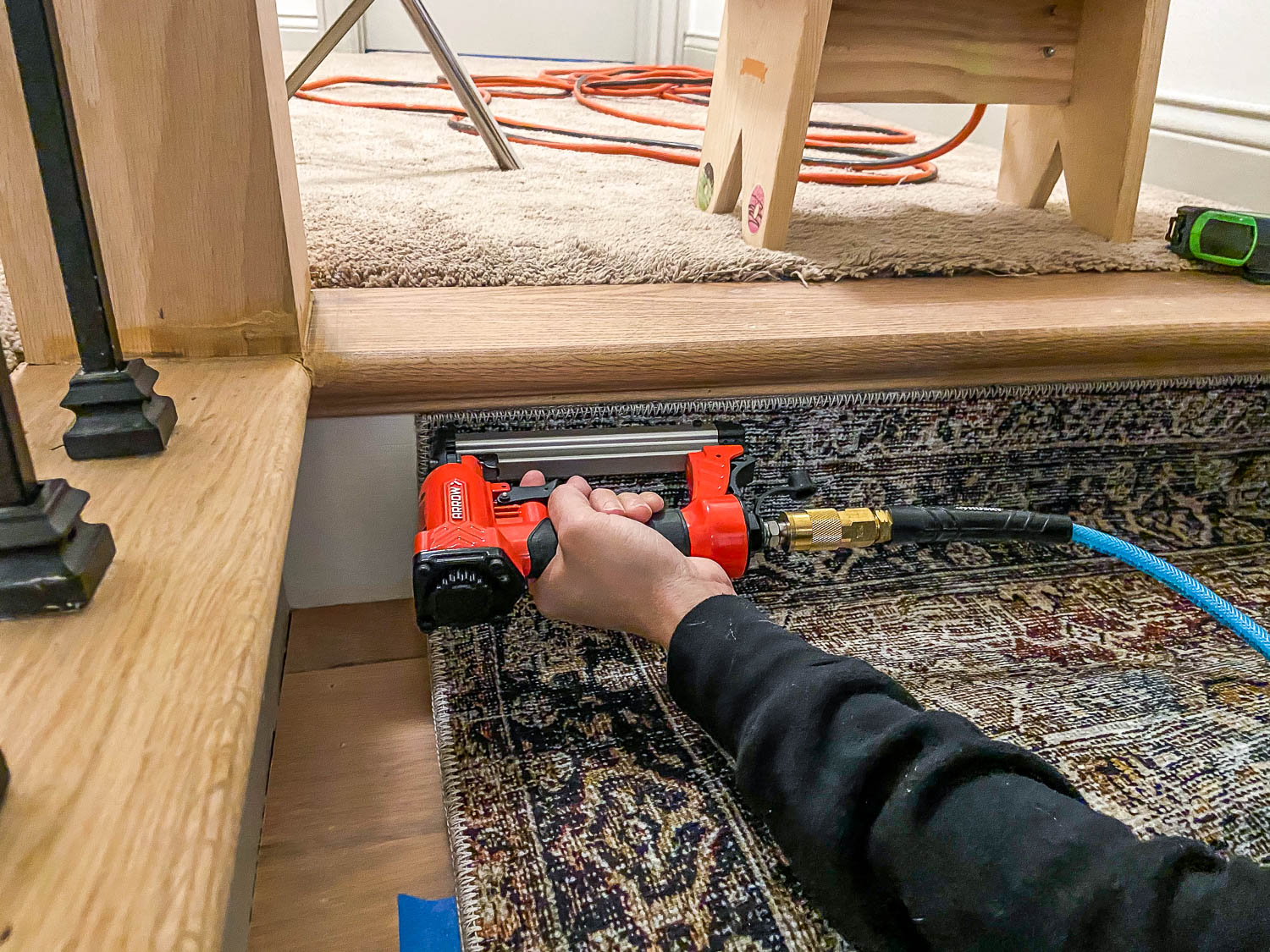
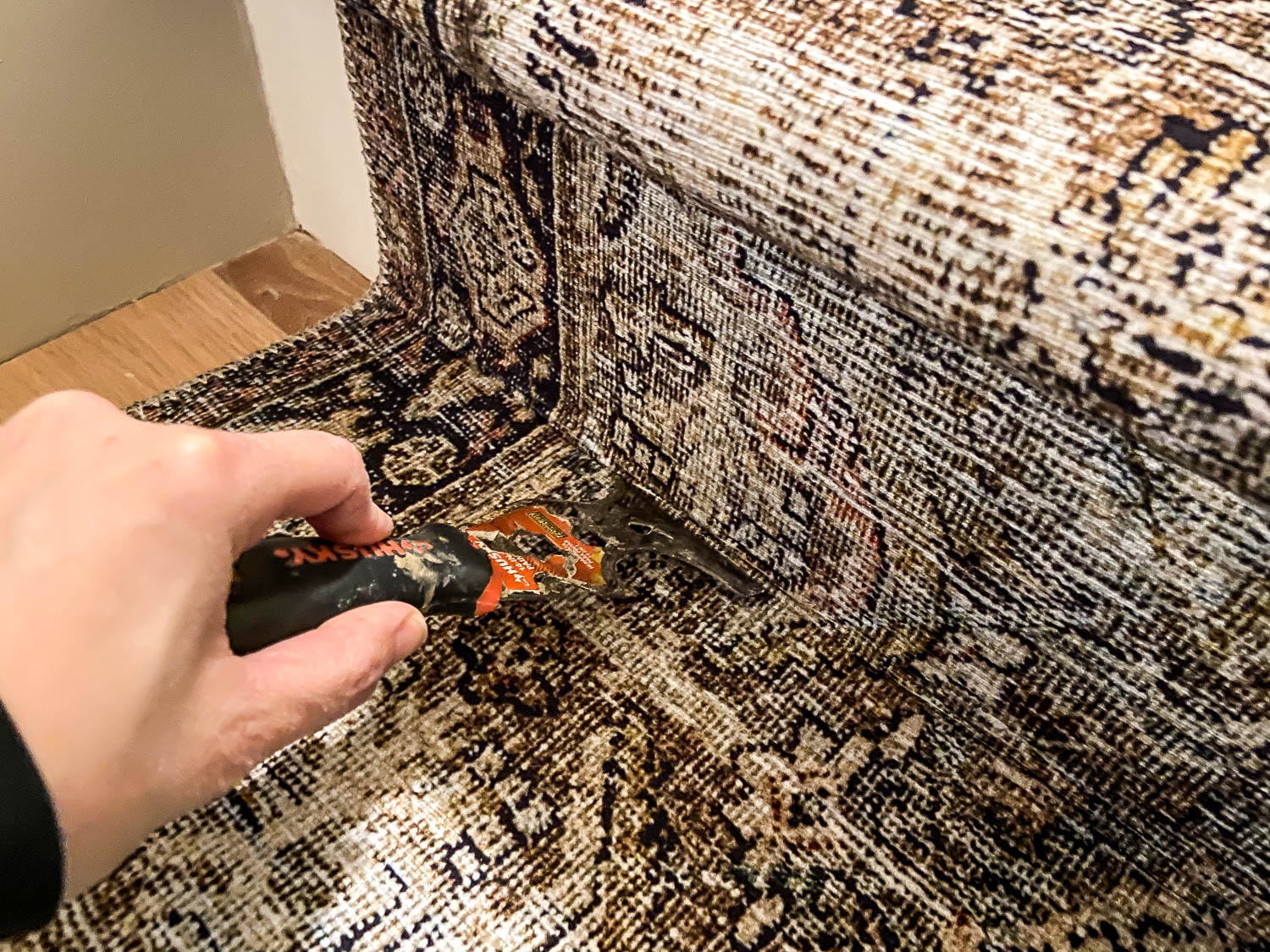
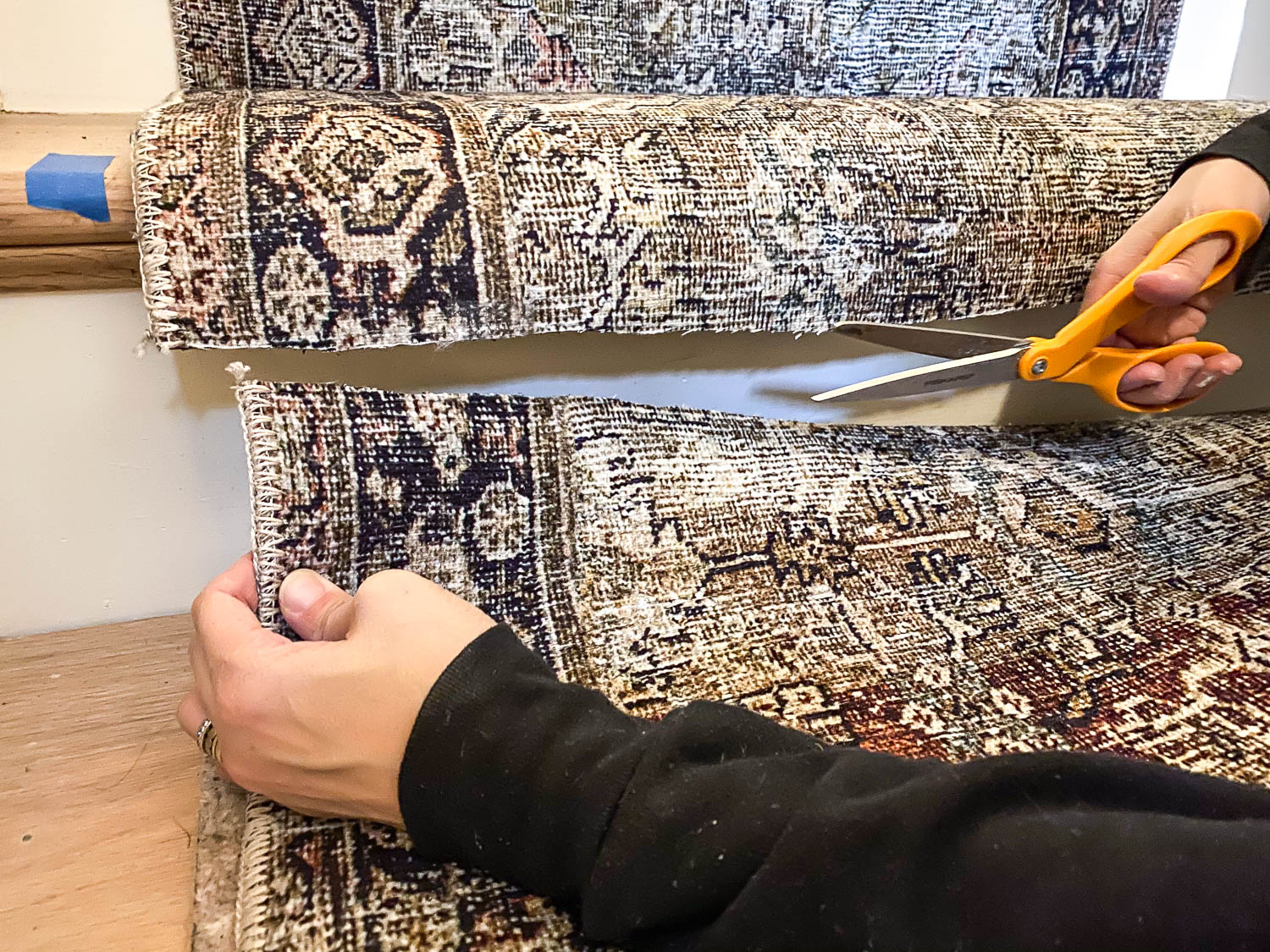
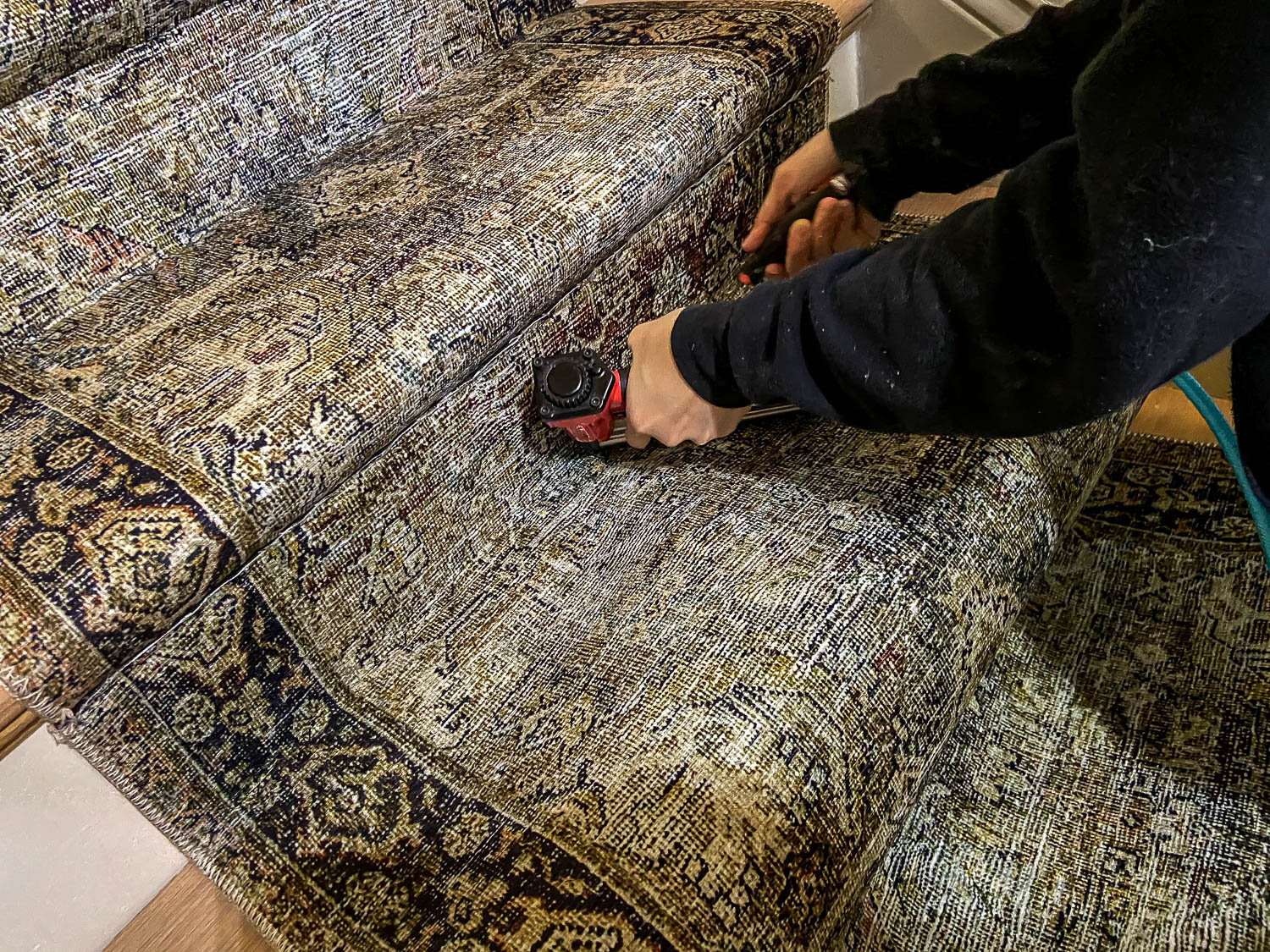
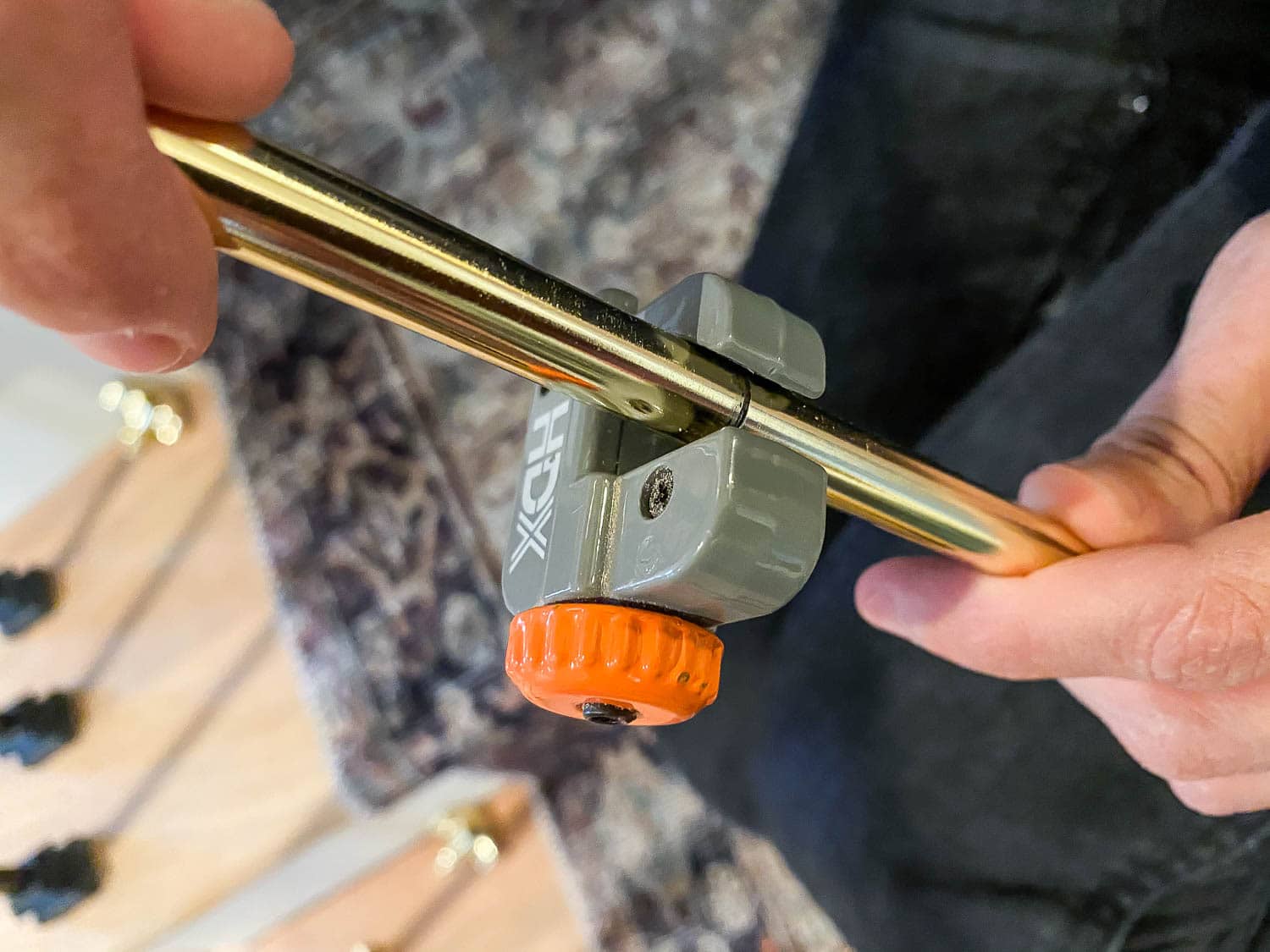
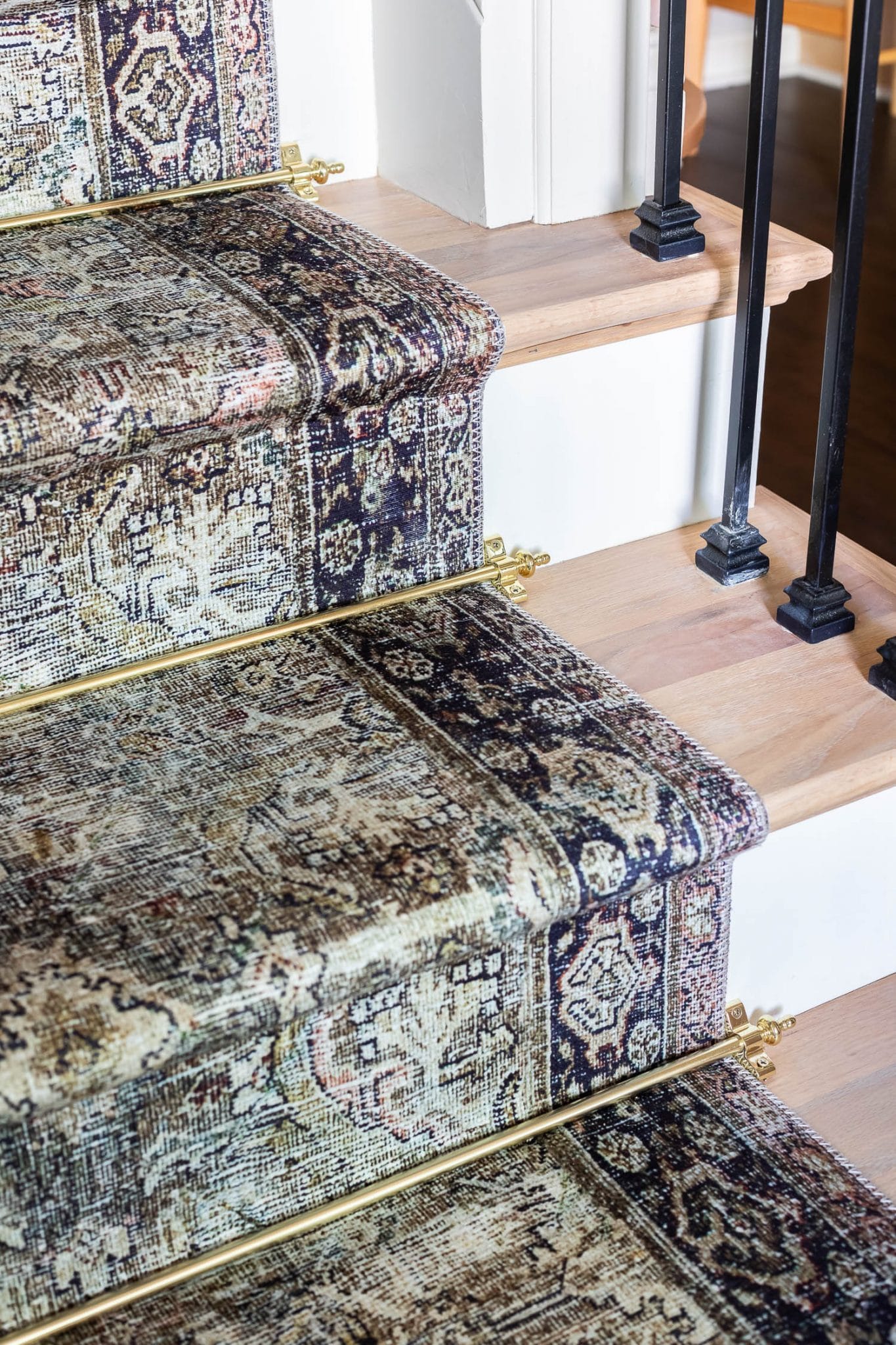
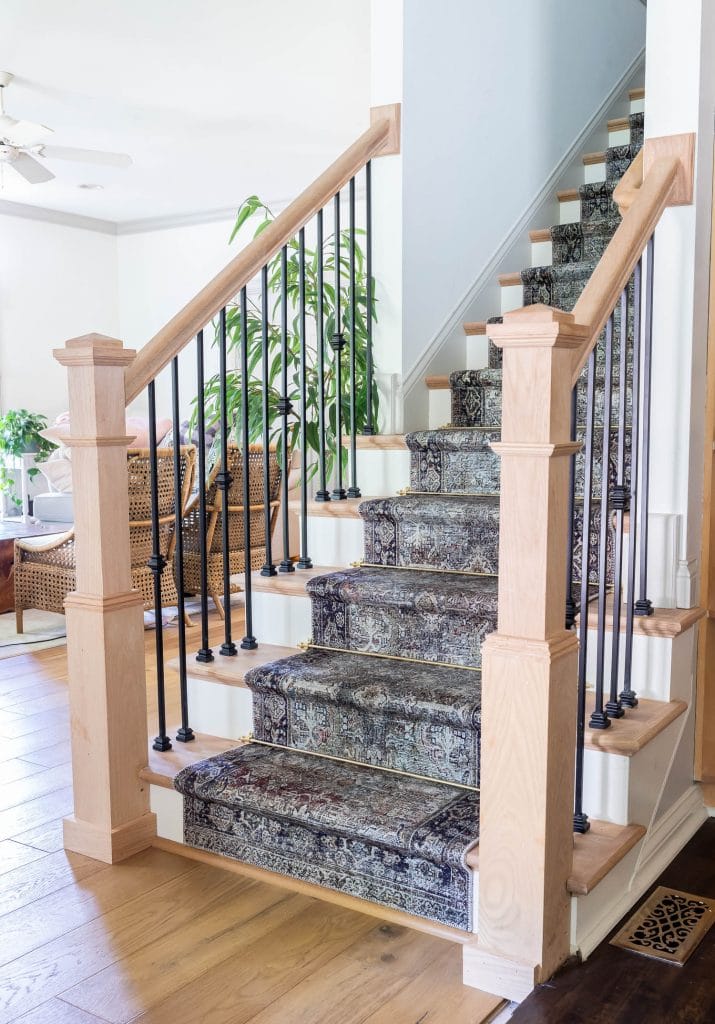
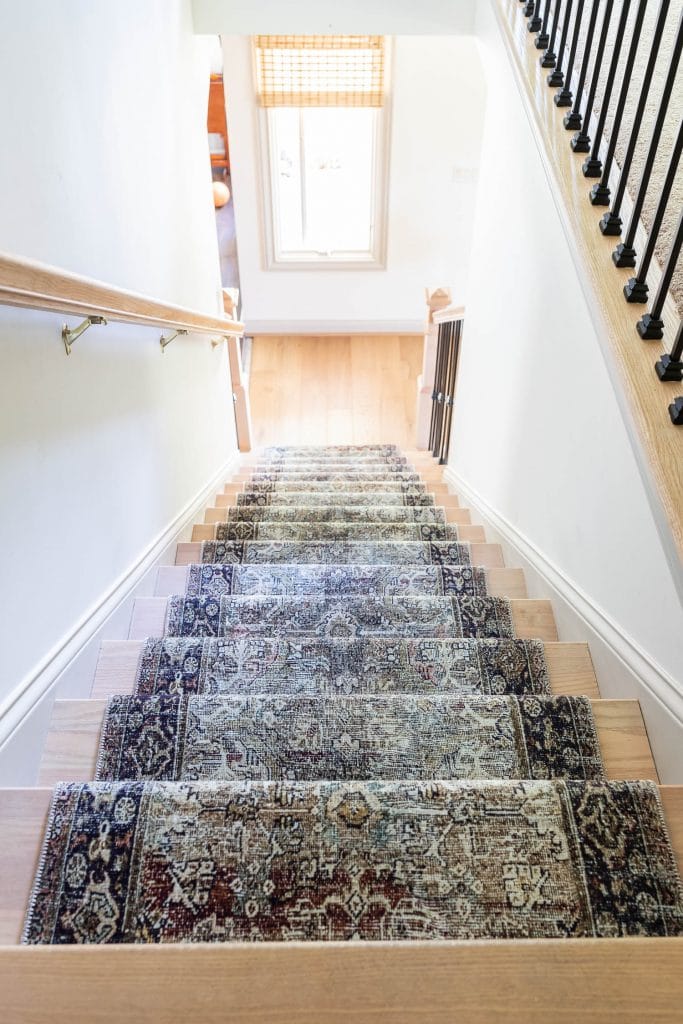

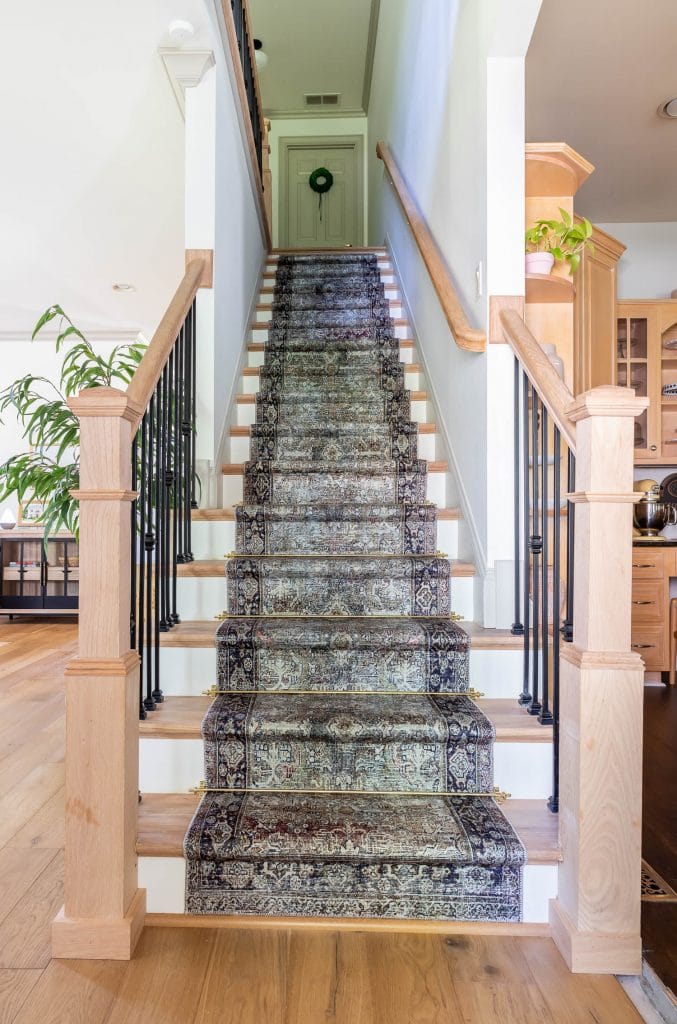

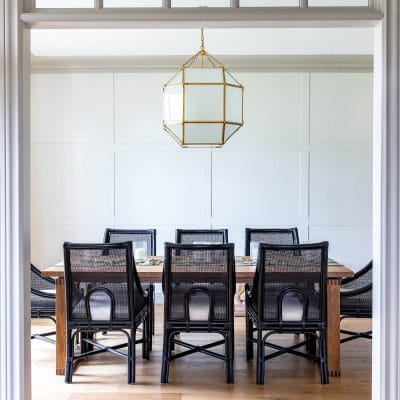

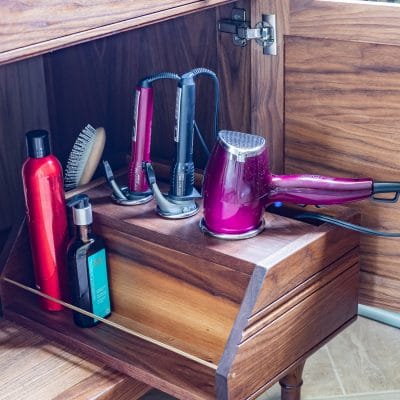
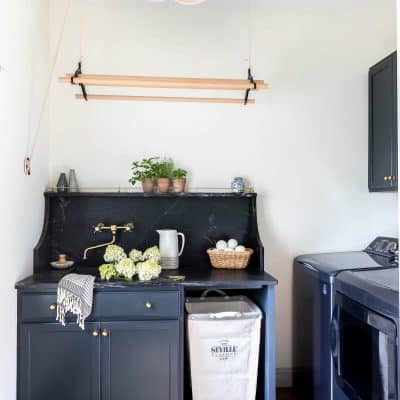
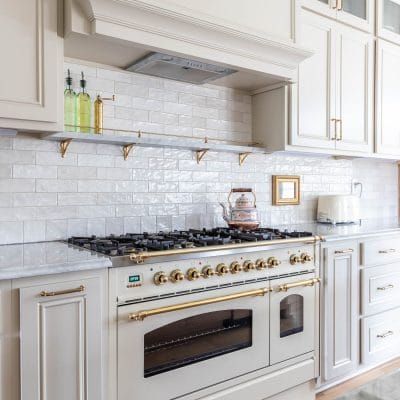
Excellent
Appealing information! Sounds Good.
Great Job on providing info on much needed topic!
Where did you get your stair runner? Brand name and size (width especially). I am looking to do this and love how yours turned out!
Thanks Mandy! Everything is linked in the post!
I don’t see any information either – other than a link for the staple gun?!
Hello! Thank you for the tutorial! Question: I’d love to see how the seams where you cut the rug and started the new one look up close. They look really smooth in the photos but I’m curious. Any learnings you’d share about how to make that transition as smooth as possible? Thanks!!
Hi!! Can you still do this on LVP, or will it only work on hardwood?
This guide is so helpful! I’ve been wanting to add a stair runner to my home for a while, and your step-by-step instructions make it seem doable. Thanks for sharing the tips on measuring and choosing the right materials! Can’t wait to give this a try!